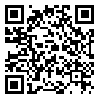Volume 13, Issue 3 (2006)
EIJH 2006, 13(3): 63-82 |
Back to browse issues page
Download citation:
BibTeX | RIS | EndNote | Medlars | ProCite | Reference Manager | RefWorks
Send citation to:



BibTeX | RIS | EndNote | Medlars | ProCite | Reference Manager | RefWorks
Send citation to:
Mousavi Hejazi B, Ansari M, Ayatollahi H, Pourjafar M R. Persian Carpet as a Media of Communication between Iranian and European Artists
A Semiotic Approach to William Morris’ Tapestries. EIJH 2006; 13 (3) :63-82
URL: http://eijh.modares.ac.ir/article-27-8575-en.html
URL: http://eijh.modares.ac.ir/article-27-8575-en.html
1- Faculty of Arts, Tarbiat Modares University
2- Tarbiat Modares University
3- Shahed University
2- Tarbiat Modares University
3- Shahed University
Abstract: (13026 Views)
Persian carpet weaving is one of Iran’s most famous industries that has attracted the world’s attention to Persian arts through the centuries. What above all, have given prominence to Persian carpet as a beautiful work of art are the pattern and its composition in a two-dimensional space. The diversity of patterns, use of deep and beautiful colors, good composition, harmony of colors, delicate and poetic composition are among the most outstanding features of Persian carpet. Industrial advancement and development of transportation in the 19th century led the western explorers to travel eastward making them acquainted with the cultural heritage of these civilizations. William Morris, the leading thinker and artist of the British Arts and Crafts Movement is among the first to conduct a research on Persian carpet’s patterns and designs. In this paper, we are proposing a semiotic approach to the transaction between Persian artists who made beautiful and ever-lasting carpet designs and William Morris as a pioneer of Pre-Modern Movements in Europe, who studied and recognized the underlying principles of Persian art (mostly carpet), and applied them in a creative way to his own remarkable hand-made designs.
Keywords: Persian Carpet, Media of Communication, Iranian and European Artists, Semiotic Approach, William Morris, Tapestries
Received: 2010/05/31 | Accepted: 2010/05/31 | Published: 2010/05/31
| Rights and permissions | |
 |
This work is licensed under a Creative Commons Attribution-NonCommercial 4.0 International License. |







